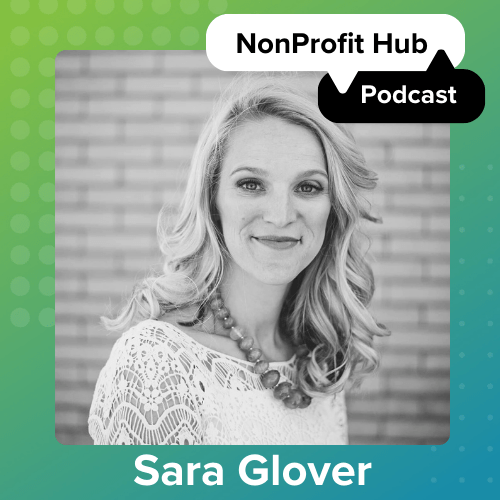Nonprofits are always looking for new ways to expand their reach, build donor relationships, and boost fundraising—all while navigating tight budgets and resources. One cost-effective way to keep your community engaged is by hosting a hybrid event, which blends elements of in-person and virtual events to appeal to a wider audience.
Hybrid events open up many possibilities for your nonprofit, allowing you to plan fundraising galas, conferences, workshops, and more while engaging supporters far and wide.
In this guide, we’ll explore the benefits of hybrid nonprofit events, plus some bonus tips for successful planning.
1. Increased Reach and Accessibility
Hybrid events are a proven and practical way to expand your nonprofit’s audience. They appeal both to those who enjoy the networking and social aspects of an in-person event and those who prefer the conveniences of a virtual event.
Planning a hybrid event removes geographical barriers, allowing people to participate no matter where they’re located. Even if potential attendees live far away or lead busy lives that make traveling to your event challenging, they can still get involved through their laptop, tablet, or phone.
2. Cost-Effectiveness
Hybrid events are cost-effective for both your nonprofit and its guests. Participants have the option to “attend” without worrying about travel or childcare costs. At the same time, your nonprofit can accommodate more attendees without having to pay for a larger venue, refreshments, and expensive decorations.
Any costs associated with streaming a hybrid event will be well worth the investment since you’re saving on actual event expenses and engaging more participants throughout the event.
3. Sponsorship and Partnership Opportunities
Hybrid events open up new sponsorship and partnership opportunities that provide extra funding and awareness for your nonprofit, such as:
- Media partnerships for promoting your event
- Technology partnerships that provide discounted event solutions
- Branded merchandise opportunities
- Content partnerships with social media influencers
While traditional in-person events offer limited signage and sponsorship opportunities, digital sponsorships unlock a whole new realm of possibilities that can significantly increase your return on investment (ROI). Your nonprofit can leverage virtual donation pages, social media, and other online marketing tools to boost interest and event engagement.
4. Improved Data Collection and Analytics
Hybrid events can provide a wealth of valuable data to your nonprofit. For instance, you can easily track:
- In-person and virtual attendance
- Engagement (with polls, social media posts, and more)
- Attendee demographics
- Attendee satisfaction
With more data at your disposal, you can gain a better understanding of audience preferences and interests you can appeal to during future events.
5. Enhanced Networking and Collaboration
Hybrid events allow your nonprofit’s team and speakers to connect with both an in-person and virtual audience through breakout sessions and networking rooms. Since people can attend from anywhere in the world, you can encourage a wider group of attendees to participate, interact, and build lasting relationships.
Make it easy for participants to connect by:
- Allowing attendees to create personalized profiles and bios.
- Planning icebreaker and roundtable sessions.
- Creating interactive polls and live chat rooms.
After your event, you can allow attendees to strengthen their connections by joining a dedicated social media group or message board.
6. Expanded Fundraising Opportunities
Along with an expanded audience and reach, hybrid events facilitate more and varied ways to raise funds. These can include:
- Online and in-person auctions
- Fundraising challenges
- Raffles
- Peer-to-peer campaigns
- Merchandise sales
Offering in-person and virtual opportunities encourages more people to donate at whatever level they’re most comfortable with. You can provide more payment options and tap into a little friendly competition by setting up fundraising challenges between in-person and virtual attendees.
7. Greater Flexibility and Resilience
Your nonprofit can enjoy a lot more flexibility when planning a hybrid event. While traditional in-person events may have to rely on the weather or travel availability for success, hybrid events can move forward despite any unexpected setbacks.
Whether there’s a last-minute venue cancellation, technical issues, or a sudden change in weather, your nonprofit can still host an engaging event experience for its attendees either online or in person.
8. Improved Attendee Experience
Hybrid events provide a more personalized and customizable experience for attendees. For example, they can:
- Attend either in person or online based on their schedule and preferences.
- Engage in a variety of ways, from chat rooms to Q&A sessions.
- Appreciate multimedia content, from videos to live presentations.
Ultimately, the flexibility of hybrid events allows participants to have greater control over their individual event experience with your nonprofit. Attendees who have concerns over venue accommodations and dietary restrictions can either share them with your nonprofit’s team or simply attend virtually.
9. Increased Sustainability and Eco-Friendliness
According to a survey across 50 countries, 64% of people consider climate change to be a global emergency. As sustainability becomes more of a priority among nonprofits, companies, and individuals alike, hybrid events stand out as a more environmentally-friendly option.
Hybrid events promote sustainability by:
- Limiting the need for travel, reducing carbon emissions.
- Conserving the energy and resources typically required for in-person events.
- Reducing waste generated by single-use materials and other disposable event decorations.
By focusing on hosting an eco-friendly event, your nonprofit can improve branding and encourage greater participation. Plus, you might even open up additional sponsorship opportunities with environmentally-conscious businesses.
10. Improved Branding and Marketing Opportunities
Since hybrid events are typically perceived as innovative, progressive, and eco-friendly, they provide additional marketing and branding opportunities for your nonprofit.
You can incorporate many interactive elements, such as polls and breakout sessions, to improve engagement and encourage feedback. Event content can even then be repurposed for future marketing efforts.
Because hybrid events extend the space and time available for an event and its activities, they also allow your nonprofit to better position itself as an impactful organization in the sector. It is a terrific way to build an image as a “go-to” resource for content related to your cause.
Bonus Tips: Keys to a Successful Hybrid Event
Once you’re ready to hit the ground running with your next hybrid event, follow these tips to set your planning up for success:
- Create excitement. Identify aspects of your hybrid event that make it unique and exciting. Make the effort to include some “can’t miss” elements or even exclusive content. Create a buzz and build anticipation for your event by highlighting these elements.
- Promote on multiple platforms. Be sure to fully explain your hybrid event and what activities it will involve. Describe the differences between attending in person and virtually. Use every platform available to promote your event, including your website, email, social media, flyers, and more.
- Create a balanced agenda. Make sure your hybrid event agenda has a nice balance of content that includes live and pre-recorded videos, live cams, exclusive content, and interactive events. Keep virtual and live audiences connected.
- Keep sessions energetic and brief. The most engaging hybrid event sessions are frequently energy-filled and no longer than 20 or 30 minutes. Speakers should be coached accordingly. Sessions can also benefit from transitions that are smooth and seamless.
- Choose a platform carefully. Choose a reliable platform to stage your hybrid event and pay attention to production values and appearance. You want your online event to have a quality feel and appearance like your in-person event. Remember that your virtual event represents your nonprofit and its brand. While there are many advanced tools out there, audience expectations are higher than ever. Audio, video, and lighting should be impeccable for virtual and in-person attendees.
After your hybrid event, be sure to survey attendees to assess their satisfaction levels and get their feedback. This can be invaluable in planning future events. Of course, you should also gauge the success of your event by tracking traditional metrics like attendance, fundraising success, engagement, participation, and more.
When you recognize even just the major benefits of a hybrid event, you can realize why they have become so valuable and popular. What was once an alternative is now a desired featured event for many organizations and nonprofits.
If your nonprofit is looking to expand its reach and supporter base, explore just how far a hybrid event can take you. It can be an exciting, enlightening, and valuable way to take your event and organization to the next level.






